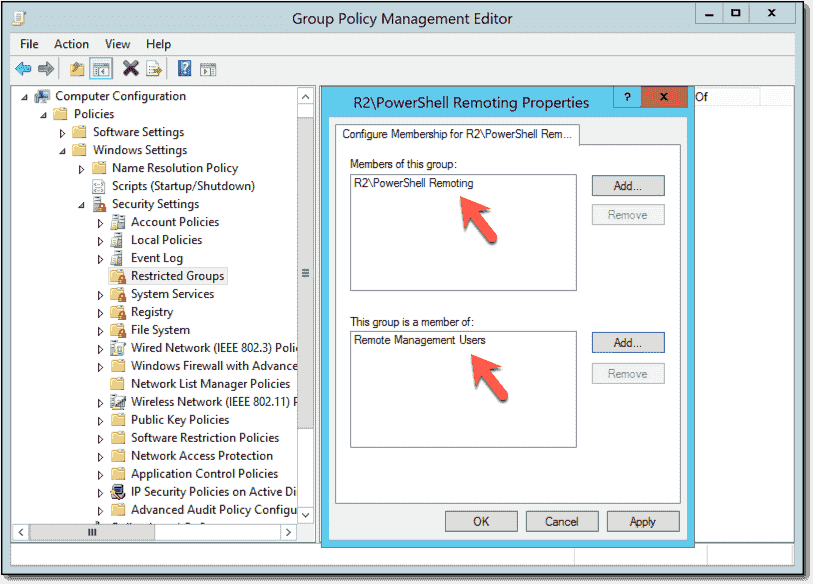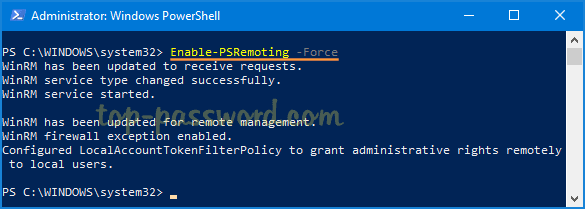

- #REJOIN COMPUTER TO DOMAIN REMOTELY POWERSHELL WINDOWS 10#
- #REJOIN COMPUTER TO DOMAIN REMOTELY POWERSHELL PASSWORD#
- #REJOIN COMPUTER TO DOMAIN REMOTELY POWERSHELL PC#
- #REJOIN COMPUTER TO DOMAIN REMOTELY POWERSHELL WINDOWS#
The connection to Azure AD, e.g., for endpoint management using Intune, usually takes place via synchronization between the AD DS and the Cloud. Joining a local AD domain is still a standard procedure for corporate PCs.
#REJOIN COMPUTER TO DOMAIN REMOTELY POWERSHELL WINDOWS#
After mounting the Windows image with DISM, copy it to the \Windows\Panther directory. Of course, you have to change the domain and credentials according to your environment: file should be named unattend.xml. The result is the XML file below, which you can also use directly without running Windows SIM. Then enter the domain under Identification and the credentials under Credentials in the Properties window.Ĭreate an answer file for joining an AD domain with Windows SIM If you create it with the Windows System Image Manager (Windows SIM), the relevant setting is found under amd64_Microsoft-Windows-UnattendedJoin_1.1_neutral.ĭrag this component to the specialize section of the answer file. However, it is often the case that PCs need to be automatically added to an AD domain during deployment.Īn answer file is useful for this task. With the exception of a provisioning package, all procedures are intended for domain joining of a live system. The localos switch tells the program that you want to join the live system to the domain. \Win11pro.odj /windowspath c:\windows /localos The second step is to import the ODJ file to the relevant client: djoin /requestodj /loadfile. If necessary, you can use machineou to specify the OU in which the account should be created.

To do so, create the computer account in advance in Active Directory using djoin.exe, and save the result in a file: djoin /provision /domain /machine Win11pro /savefile Win11pro.odj
#REJOIN COMPUTER TO DOMAIN REMOTELY POWERSHELL PC#
If there is no connection between the PC and the domain controller, you still have the option of joining the domain offline. However, for this task, they must be able to contact a Domain Controller over a VPN. The obvious advantage of this method is that you can, for example, send the package to remote users to join their PCs to the domain. You can do this by clicking the Deploy Desktop Devices tile after starting the ICD, entering the name and location of the project, and then traversing the wizard in five steps. Such packages also handle the initial setup, which involves renaming the computer and joining a domain. Windows Setup automatically executes them during the OOBE phase, or alternatively, users can import them at runtime afterwards. The Imaging and Configuration Designer (ICD), a tool included with the Windows ADK, saves the settings for the so-called runtime provisioning in PPKG files.

#REJOIN COMPUTER TO DOMAIN REMOTELY POWERSHELL WINDOWS 10#
Windows 10 introduced a new way to customize the operating system.
#REJOIN COMPUTER TO DOMAIN REMOTELY POWERSHELL PASSWORD#
Then, netdom queries the password interactively. You can either pass the password to PasswordD or leave it there with a "*". A command might look something like this: netdom join /domain: /UserD: /PasswordD:* /OU:OU=finance,DC=contoso,DC=comĪs you can see from this example, netdom can also create the computer account in a specific OU.įor the domain join, the program expects an authorized user from the domain for the UserD parameter. Unlike Add-Computer, it is only available after installing RSAT on a workstation.

If you prefer to use the netdom.exe utility instead of PowerShell, you can also use it to join a PC to a domain. However, with PCs that do not yet belong to a domain, you have to deal with notorious WinRM connection issues. If you want to add several devices to the domain at the same time, pass the names to the command as a comma-separated list. Join computers to a domain using PowerShellĪdd-Computer can also join remote computers to a domain via the ComputerName parameter.


 0 kommentar(er)
0 kommentar(er)
